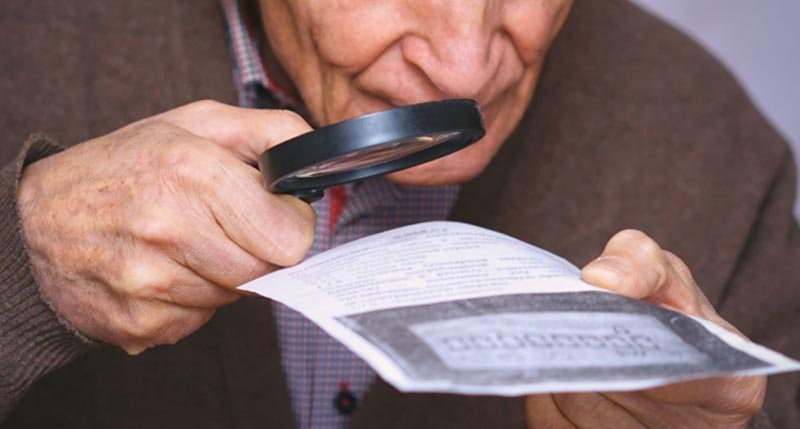February is Low Vision Awareness Month, a time to increase awareness of this condition which affects millions of Americans each day. Low vision is the term for a visual impairment that cannot be corrected by standard glasses, contact lenses, medication, or surgery. Symptoms of the condition vary, with different stages of central and/or peripheral vision loss. People with low vision may have difficulty reading, writing, recognizing faces, and performing daily activities such as cooking, grooming, or participating in games or social activities. They may also experience difficulty with mobility and navigation, as well as social isolation and depression.
There are many causes of low vision, which affects many older adults. Causes include age-related macular degeneration, diabetic retinopathy, glaucoma, and uncorrected cataracts. In some cases, low vision may be inherited or caused by a traumatic brain injury or stroke.
Symptoms of low vision can vary depending on the underlying cause, but may include blurriness, distorted vision, difficulty reading or seeing fine details, and difficulty adjusting to changes in lighting. Some individuals may also experience difficulty with color perception.
Low vision can have a significant impact on a person’s quality of life, but there are many strategies and devices that can help. These include:
- Magnification devices such as magnifying glasses, handheld magnifiers, and electronic magnifiers can help individuals to read, write, and perform other tasks that require fine visual detail.
- Electronic magnifiers use a camera to capture an image and then display it on a screen, which can be enlarged and adjusted for contrast. A smart modern hack to replicate this idea is to take a photo with a cell phone or tablet and enlarge the image onscreen.
- Prescription reading glasses have special lenses that can help people with low vision read more easily by magnifying text and increasing contrast.
- Adaptive technologies can be used to help individuals with low vision perform tasks such as reading, writing, and using the computer. These technologies include text-to-speech software, electronic magnifiers, and screen readers.
- Large print materials and audiobooks: Many books, newspapers, and even magazines are available in large print or in audio versions, which makes it easier to enjoy them.
- Mobility and orientation devices can help people with visual impairments navigate more easily, such as canes, mobility scooters, guide dogs, and GPS devices.
- Enhanced lighting: Proper lighting can help you see more clearly. This may include adding more light to a room or using special bulbs that increase contrast.
- Color filters: Special glasses or overlays can help people with low vision see colors more easily.
- Low vision training and rehabilitation: This specialized type of therapy includes training and education on how to best use the devices and strategies that can help individuals become more independent and confident in their ability to perform daily tasks and improve their quality of life.
If you or a loved one have low vision, work with your eye doctor to identify the ideal strategies and devices to help manage your unique condition. It can also be beneficial to educate yourself about the condition and seek support from others who are experiencing similar issues. A great place to start is the Prevent Blindness website, Living Well with Low Vision.
Low vision can be challenging and isolating, but with the right strategies and devices, you or your loved one can lead full and productive lives. The goal is to make adjustments with the aim of continuing to live life to the fullest.
Finally, it’s crucial to schedule your annual comprehensive eye exam to ensure you are doing everything possible to protect the level of vision that remains.

